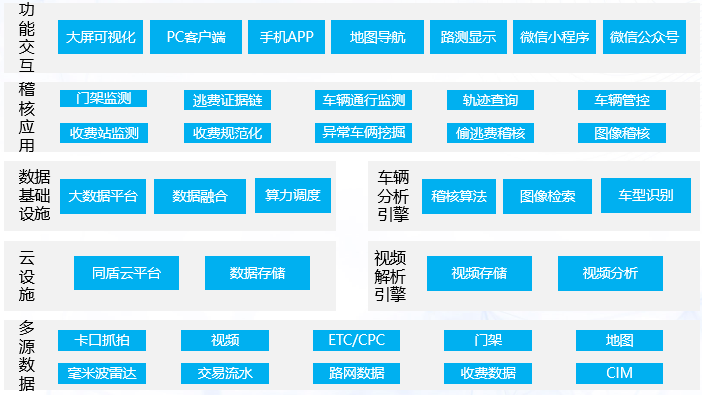

Expressway toll

Since the removal of toll stations at the provincial boundaries and the implementation of free-flow tolling, the toll network has expanded, the number of tolling points has increased, and toll collection has gradually shifted from manual to system-based. However, determining whether the toll collection system is operating normally, if vehicle tolls are being fully charged, and if billing is being properly settled has become significantly more challenging, posing a new difficulty for the operation and management of expressways.
To address these challenges, Beiming Software has developed an expressway toll audit system. This system leverages the convergence and sharing of diverse and heterogeneous expressway operation big data. Utilizing hyper-converged edge computing, visual AI, and traffic algorithms, it monitors expressway toll systems, toll operations, and vehicle from both real-time and scheduled perspectives.This approach ensures the healthy operation of electromechanical systems, effectively combats vehicle toll evasion, standardizes toll operations, and facilitates provincial assessments. It also enables intelligent auditing, precise law enforcement, and rapid evasion recovery, ensuring that no vehicle’s fee is overlooked.

1. Integrate and collaborate on massive data for precise analysis of hidden value
The system integrates vast amounts of real-time traffic data, utilizing technologies such as data mining and pattern recognition. It offers closed-loop management of traffic data, revealing previously unknown and potentially valuable insights. This enables precise analysis of individual traffic behaviors, group behaviors, and macro-level conditions.
2. Audit algorithms evolve to detect toll evasion
Built on an advanced model training platform, the system rapidly develops algorithms for various scenarios including traffic situation awareness, scheduling optimization, simulation forecasting, and toll auditing. This allows for the swift creation of new capabilities to identify and address toll evasion behaviors. The algorithm model is issued in unified batches, greatly simplifying management challenges and streamlining the entire process from algorithms to application, ensuring that no toll evasion goes undetected.
3. Rapid deployment of business applications for efficient expressway management
The cloud platform facilitates multi-source data fusion and conversion in a complex network environment, standardizes access logic on the consumer side, and shields differences in data and computing power acquisition. It offers systematic data assets and resource scheduling management tools. By leveraging efficient data development tools, the platform significantly reduces the gap between business needs and implementation.



1. Accurate strike against toll evasion:The system performs comprehensive analysis and deep mining of various data sources, including toll collection and monitoring data, to precisely identify suspected toll evasion vehicles and pinpoint internal staff's non-compliant toll collection behaviors, thereby enhancing the efficiency of audit personnel in striking against toll evasion activities.
2. Convenient evasion recovery: The system interfaces with various platforms, such as the overload control system and green channel system, providing rich image and video information to assist audit personnel in collecting evidence. It enables the automated collection and assembly of work order evidence, reducing the workload of evidence collection and data entry.
3. Identifying and addressing loopholes: The system provides comprehensive, real-time displays of toll audit conditions, presenting the characteristics of toll evasion vehicles in a data board format. This facilitates the identification and resolution of loopholes in the toll collection system.
4. Efficient supervision: The system provides a key performance indicator calculation system for audit work, encouraging audit personnel to improve work efficiency.
5. Safe and controllable:The system features comprehensive permission grading, operation log recording, picture watermarking, and other functions to protect the safety of data, including driving trajectories and vehicle images.